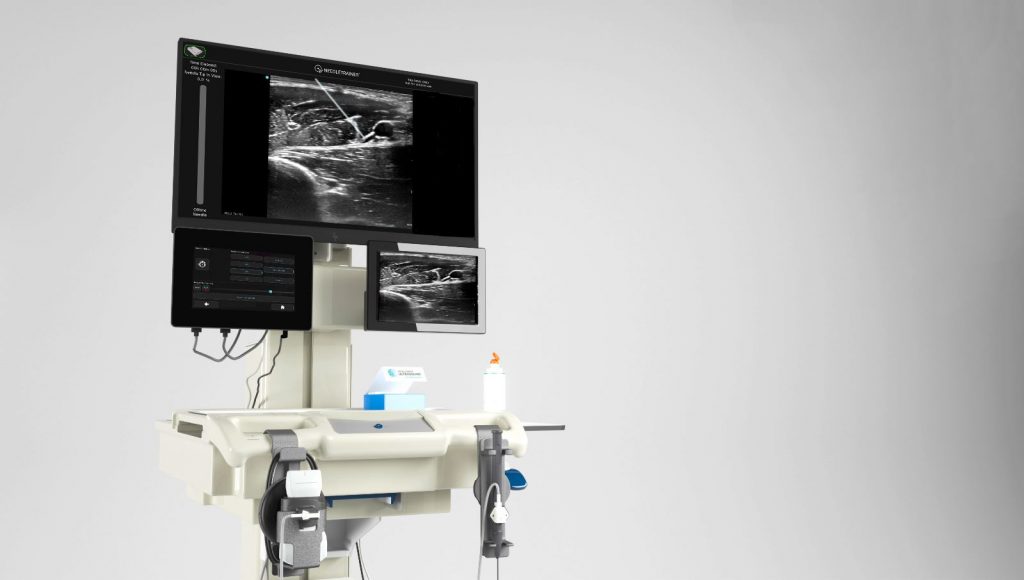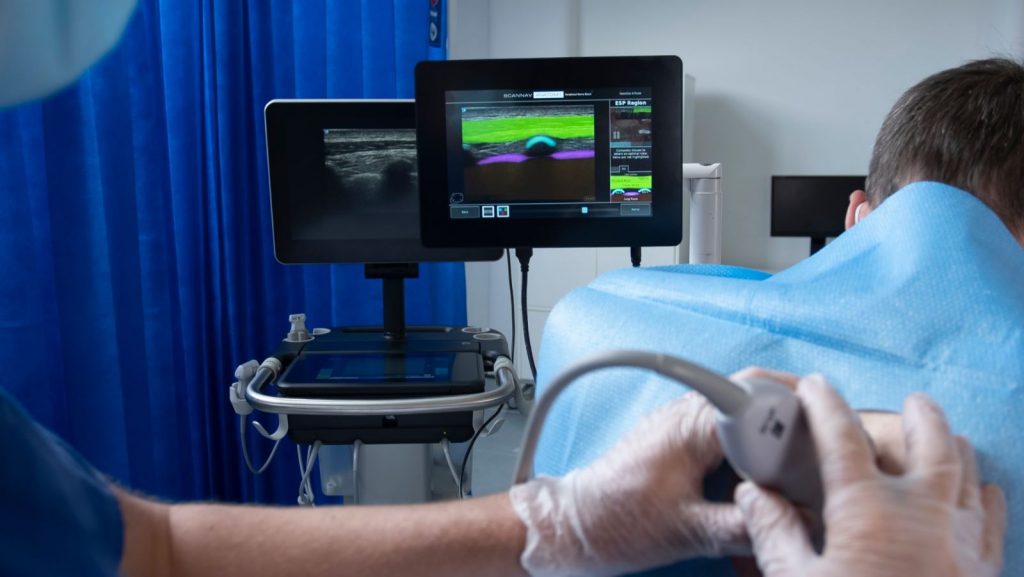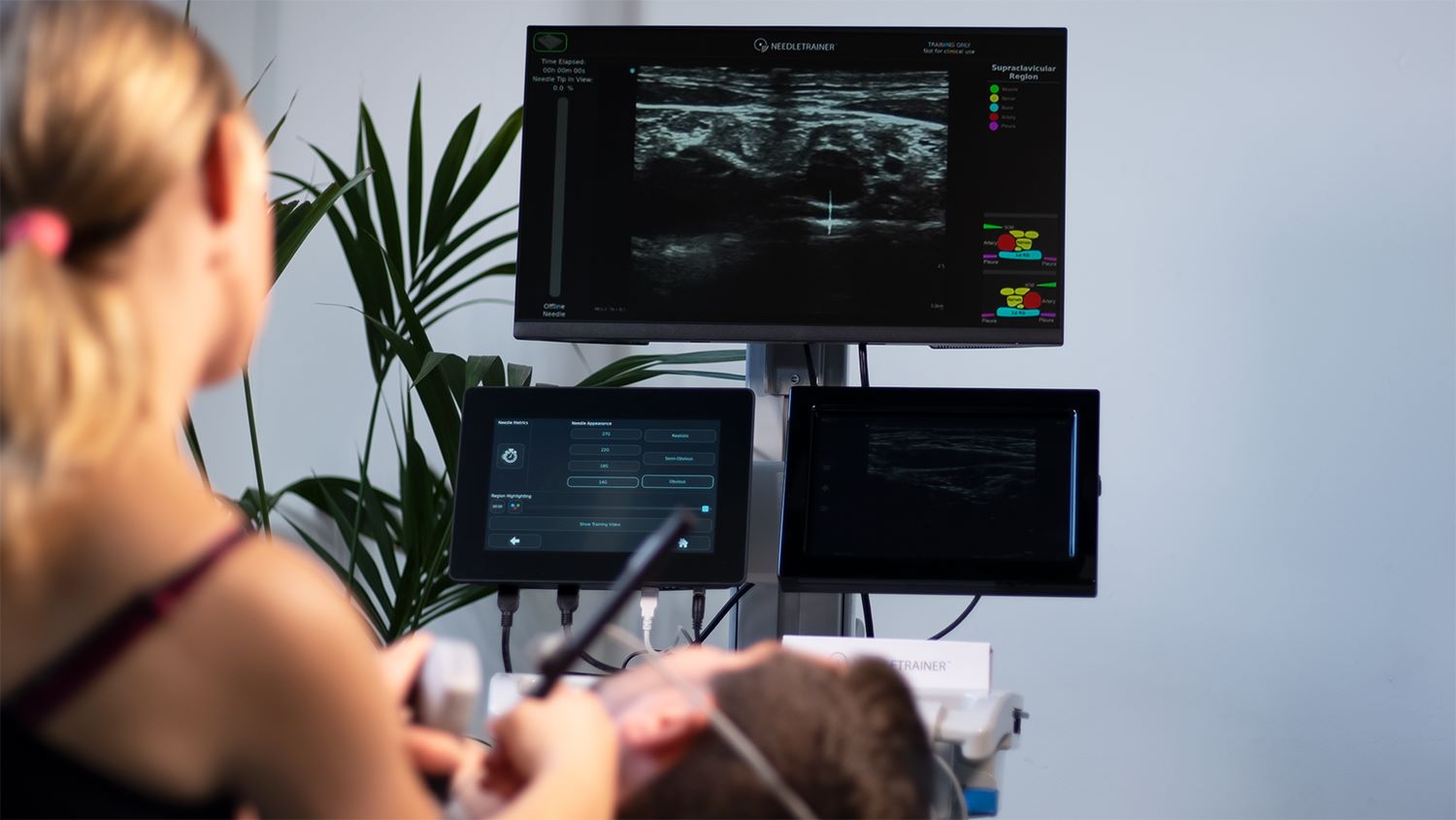To describe Intelligent Ultrasound’s Needle Trainer as a simple simulator is very reductive. Our Simulation Technician tested it for us
Within clinical practice, knowing how to use an ultrasound scanner and being able to interpret images are fundamental aspects that need to be known and honed. A lot of practice is therefore necessary, which, as in most cases, can be done directly on the patient or through the use of specially developed devices.
In this article, I tell you about the Needle Trainer from Intelligent Ultrasound.

Although the simplicity of the name may be misleading, the Needle Trainer is a unique simulator because everything is based on images produced directly by the ultrasound machine on a real patient connected to the simulator, analysed in real time by the software.

The Manufacturer
Intelligent Ultrasound has been a leader in the design of highly specialised ultrasound training devices for years with a product line consisting mainly of: Needle Trainer, Heartworks, Babyworks, ScanTrainer and BodyWorks.
As you will read below, a key element that distinguishes this company, again in the ultrasound field, is artificial intelligence.
In Italy, Intelligent Ultrasound’s products are sold and technically supported by SIMULKARE, whom I thank for giving me the opportunity to test the product.
Composition
The simulator is wheeled and consists of:
- ultrasound monitor or tablet connected to the wireless probe
- a monitor on which the software user interface runs
- a larger monitor on which to view the ultrasound images during software processing
- retractable training needle, together with patches to protect the body from the
- device magnetic field, albeit invisible ;-), which serves to connect the retractable needle and the actual probe within the activity space
The main functions
The Needle Trainer has three functions:
- PNB Procedures
- Needle & Scan
- Offline Needle
PNB Procedures
To call the Needle Trainer just a simulator is quite reductive because of the PNB Procedures function and the artificial intelligence called ScanNav™ Anatomy.
ScanNav™ Anatomy Peripheral Nerve Block (PNB) is designed to improve the accuracy and standardisation of ultrasound image interpretation by providing a colour overlay of key anatomical structures during a live ultrasound scan.
ScanNav™ Anatomy is FDI-certified intelligence, i.e. it can be used within clinical practice, as it is certified, tested and validated for, precisely, the practice of locoregional anaesthesia.

Needle & Scan
Here you have the possibility of using the retractable needle combined with the image captured by the ultrasound scanner (General Electric or SonoSite), all thanks to the magnetic field generated, which serves to identify both elements within the space of action.
The operation is quite simple: you have to prepare the figure or the actual patient by attaching the protective patches at the points of interest, and immediately afterwards you can start practising with the ultrasound scanner and the retractable needle.
The combination of the ultrasound and Needle Trainer graphics is shown on the main screen in the image from the General Electric ultrasound tablet, cuts out the part of the instruments, which are still interacted with by the tablet, and reprocesses the images according to the retractable needle.
I did a comparison between the real needle and the image generated by the retractable needle and the rendering of the latter is really outstanding.

Offline Needle
This function is the simplest of the three, allowing you to practise simply with pre-downloaded videos. The Needle Trainer set comes with a rigid pad on which you can place the retractable needle and practise, without the need for an ultrasound machine.
The verdict
Intelligent Ultrasound’s Needle Trainer allows practitioners to acquire and refine their skills in locating relevant anatomical structures, such as nerves or blood vessels, and correctly inserting the needle to administer the local anaesthetic. It is, moreover, a very complete tool in all respects, simulative and clinical; to describe it only as a simulator is very reductive. True, ScanNav within the Needle Trainer is optional, but reflecting on who might buy such a product, i.e. mainly hospitals, having a sort of 2-in-1 is not such a bad choice, given all the possible economic evaluations. It allows the same instrumentation to be used for both training and clinical activity by allowing simulations to be carried out right with the patient using the retractable needle, before performing the actual procedure. Certainly this tool is great for continuing education: practitioners can also use the Needle Trainer for the continuous improvement of their skills throughout their clinical career.

- Use of a real ultrasound machine
- Possibility to practise using pre-loaded ultrasound images
- Trolley not too bulky in relation to the amount of devices positioned
- Very accurate probe management
- Looking at ScanNav, 10 blocks are certified, so it is possible to use the Needle Trainer for specific clinical use
- The retractable needle can also be used on a patient in preparation for the real needle manoeuvre

- Updating the ultrasound probe software may require the release of a patch to resolve any problems with the needle trainer
- The transmission of images from the ultrasound scanner to the needle trainer occurs with a very slight delay, due to image processing by the dedicated software
- Compatible ultrasound scanner models are only SonoSite and GE
Antonio Scalogna






































